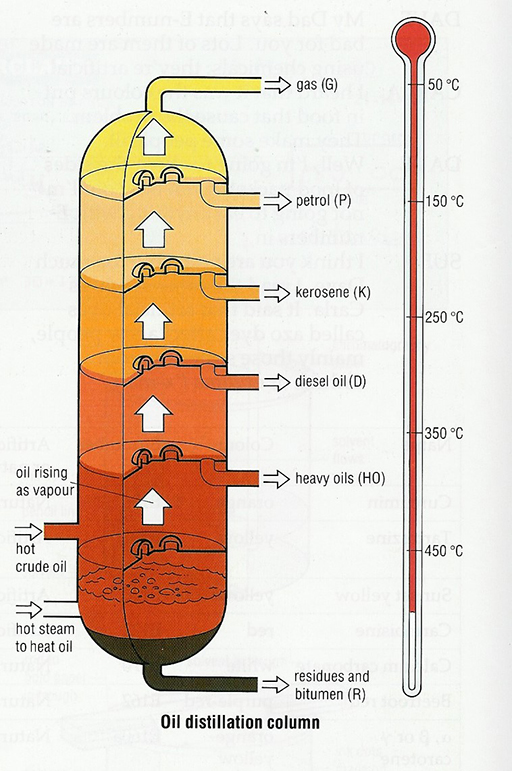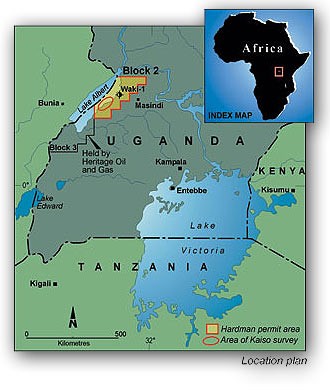Resource 2: Products from crude oil
![]() Teacher resource for planning or adapting to use with pupils
Teacher resource for planning or adapting to use with pupils
This diagram shows an oil distillation column.

Original Source of diagram: Oxford Science Programme Book1, published by OxfordUniversity Press, p. 92 (1990)
| Uses of crude oil | |
| Fraction (or part) of the crude oil | Products from this fraction (sometimes after further treatment) |
| Gas (G) | Gas fuels, such as calor gas, making other chemicals |
| Petrol (P) | Fuel for cars, pesticides, drugs, plastics, fertilisers, detergents, solvents, making other chemicals |
| Kerosene (K) | Paraffin, jet fuel, white spirit |
| Diesel (D) | Fuel for trucks and buses, central heating oil |
| Heavy Oils (HO) | Lubricating oils and grease, waxes, polishes, making other chemicals |
| Residue (R) | Tar for road surfaces, waterproof roofing materials, fuel for power stations |
Teaching ideas
Teaching ideas would include making posters of products and by-products of crude oil using collages of magazine and newspaper adverts (you could show the products or brand names and symbols). Alternatively, you could make a display of empty containers. Products to consider include paraffin, diesel oil, petrol, lip balm, lipsticks, vaseline, lubricating oils, candles, tar and plastics.
Oil in Uganda
In 1989, several international companies were exploring for oil in western Uganda but soon lost interest as oil prices were low and production costs were high. More recently, oil exploration has begun again and production is expected to begin in the next few years. Ownership of some of the land that is being explored in western Uganda is disputed, which may slow this down. Pupils could think about how oil exploration might affect the environment.

Adapted from: UG Pulse, Website
In 2006 Uganda experienced one of the worst electrical power shortages in its history. The government installed two diesel-fired generators to relieve the shortage but they emit high concentrations of greenhouse gases and need oil be imported. The two generators led to a rapid escalation in the demand for diesel, causing widespread fuel shortages, especially in Kampala. When they are delivered, diesel supplies at Kampala fuel stations last less than 24 hours before selling out. Now, when the national power grid cuts the power supply, which still happens for extended periods at a time, businesses that have come to rely on their own back-up generators can’t find the diesel to run them. From small enterprises to manufacturing factories, businesses across the country have been forced to lay off workers and shut down operations. The government has approximated that power shortages of 2006 cost the economy at least $250 million, its worst power failure in decades. At the moment, oil and oil-based fuels have to be imported.
Find further information at:
http://www.americanprogress.org/ issues/ 2007/ 07/ energy_crisis.html [Tip: hold Ctrl and click a link to open it in a new tab. (Hide tip)]
Resource 1: Renewable and non-renewable resources



